2-Pyrimidinamine, N-(1-methylethyl)- (9CI)
- CAS NO.:4214-72-6
- Empirical Formula: C7H11N3
- Molecular Weight: 137.18
- MDL number: MFCD00867809
- SAFETY DATA SHEET (SDS)
- Update Date: 2024-08-11 15:28:25
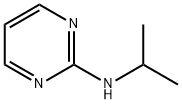
What is 2-Pyrimidinamine, N-(1-methylethyl)- (9CI)?
Originator
Nerfactor,Ipsen,France,1981
The Uses of 2-Pyrimidinamine, N-(1-methylethyl)- (9CI)
Isaxonine is a neurotropic agent. Isaxonine prevents synaptic remodeling by suppression of the redundant nerve endings from additional axons. Isaxonine is transformed by cytochrome P 450 into reactive metabolites that lead to immunoallergic hepatitis in man.
Definition
ChEBI: Isaxonine is an aminopyrimidine.
Manufacturing Process
6 liters of ethanol and 685 g (5 mold of 2-isopropylamino pyrimidine were added to a 10 liter reactor and stirred. To the solution were added 600 g (5.2 mols) of phosphoric acid and the mixture was boiled under reflux for one hour. There was obtained a dark green solution which was treated with 30 g of carbon black. After separation and crystallization while stirring overnight, the crystallized product was separated, washed with ethanol and dried at 50°C. There was obtained 1,027 g (87% yield) of a white powder melting at 125°C. The analysis of the compound showed a good correspondence with the formula C7H14O4N3P.
brand name
Nerfactor;Verfactor.
Therapeutic Function
Neurotropic
World Health Organization (WHO)
Isaxonine phosphate was introduced in 1981 and marketed exclusively in France for the treatment of peripheral neuropathy. In January 1983 indications for use were restricted following its association with cases of toxic hepatitis. It was subsequently withdrawn in June 1983.
Properties of 2-Pyrimidinamine, N-(1-methylethyl)- (9CI)
| Melting point: | 27-28℃ |
| Boiling point: | 229℃ |
| Density | 1.065 |
| Flash point: | 93℃ |
| storage temp. | Keep in dark place,Inert atmosphere,Room temperature |
| solubility | Chloroform (Slightly), DMSO (Slightly), Methanol (Slightly) |
| form | Colourless Semi-Solid |
Safety information for 2-Pyrimidinamine, N-(1-methylethyl)- (9CI)
| Signal word | Warning |
| Pictogram(s) |
 Exclamation Mark Irritant GHS07 |
| GHS Hazard Statements |
H315:Skin corrosion/irritation H319:Serious eye damage/eye irritation H335:Specific target organ toxicity, single exposure;Respiratory tract irritation |
| Precautionary Statement Codes |
P261:Avoid breathing dust/fume/gas/mist/vapours/spray. P305+P351+P338:IF IN EYES: Rinse cautiously with water for several minutes. Remove contact lenses, if present and easy to do. Continuerinsing. |
Computed Descriptors for 2-Pyrimidinamine, N-(1-methylethyl)- (9CI)
New Products
4-AMINO-TETRAHYDRO-PYRAN-4-CARBOXYLIC ACID HCL 4-(Dimethylamino)tetrahydro-2H-pyran-4-carbonitrile 4-Aminotetrahydropyran-4-carbonitrile Hydrochloride (R)-3-Aminobutanenitrile Hydrochloride 3-((Dimethylamino)methyl)-5-methylhexan-2-one oxalate 1,4-Dioxa-8-azaspiro[4.5]decane 5-Bromo-2-nitropyridine Nimesulide BP Aceclofenac IP/BP/EP Diclofenac Sodium IP/BP/EP/USP Mefenamic Acid IP/BP/EP/USP Ornidazole IP Diclofenac Potassium THOMAIND PAPER PH 2.0 TO 4.5 1 BOX BUFFER CAPSULE PH 9.2 - 10 CAP SODIUM CHLORIDE 0.1N CVS ALLOXAN MONOHYDRATE 98% PLATINUM 0.5% ON 3 MM ALUMINA PELLETS (TYPE 73) LITHIUM AAS SOLUTION 2-Bromo-1-(bromomethyl)-3-chloro-5-nitrobenzene 2-Bromo-3-nitroaniline N-(3-Hydroxypropyl)-N-methylacetamide 3-Bromo-6-chloropyridazine 4-ethyl-3-nitrobenzoic acidRelated products of tetrahydrofuran
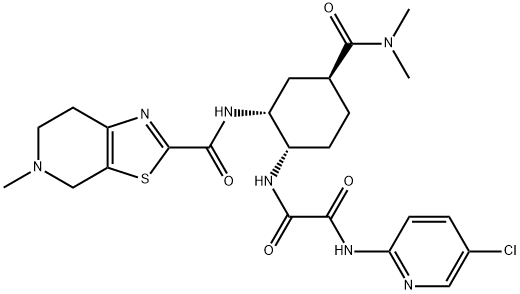
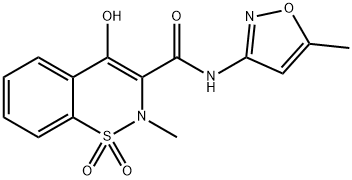

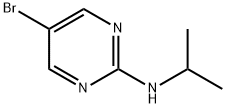
![4-([2-(ISOPROPYLAMINO)-6-(TRIFLUOROMETHYL)-4-PYRIMIDINYL]OXY)BENZENECARBONITRILE](https://img.chemicalbook.in/StructureFile/ChemBookStructure2/GIF/CB3380279.gif)
![4-[(4-FLUOROPHENYL)SULFANYL]-N-ISOPROPYL-6-(TRIFLUOROMETHYL)-2-PYRIMIDINAMINE](https://img.chemicalbook.in/StructureFile/ChemBookStructure2/GIF/CB4476759.gif)
![4-[(4-CHLOROPHENYL)SULFANYL]-N-ISOPROPYL-6-(TRIFLUOROMETHYL)-2-PYRIMIDINAMINE](https://img.chemicalbook.in/StructureFile/ChemBookStructure2/GIF/CB9444423.gif)
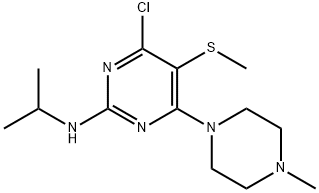
You may like
-
 1-Methyl-6-oxo-1,6-dihydropyridazine-3-carbonitrile 98%View Details
1-Methyl-6-oxo-1,6-dihydropyridazine-3-carbonitrile 98%View Details
99903-60-3 -
 88491-46-7 98%View Details
88491-46-7 98%View Details
88491-46-7 -
 1823368-42-8 98%View Details
1823368-42-8 98%View Details
1823368-42-8 -
 2-(3-(tert-butyl)phenoxy)-2-methylpropanoic acid 1307449-08-6 98%View Details
2-(3-(tert-butyl)phenoxy)-2-methylpropanoic acid 1307449-08-6 98%View Details
1307449-08-6 -
 Ethyl 3-(furan-2-yl)-3-hydroxypropanoate 25408-95-1 98%View Details
Ethyl 3-(furan-2-yl)-3-hydroxypropanoate 25408-95-1 98%View Details
25408-95-1 -
 2-Chloro-5-fluoro-1-methoxy-3-methylbenzene 98%View Details
2-Chloro-5-fluoro-1-methoxy-3-methylbenzene 98%View Details
1805639-70-6 -
 1784294-80-9 98%View Details
1784294-80-9 98%View Details
1784294-80-9 -
 Lithium ClavulanateView Details
Lithium ClavulanateView Details
61177-44-4